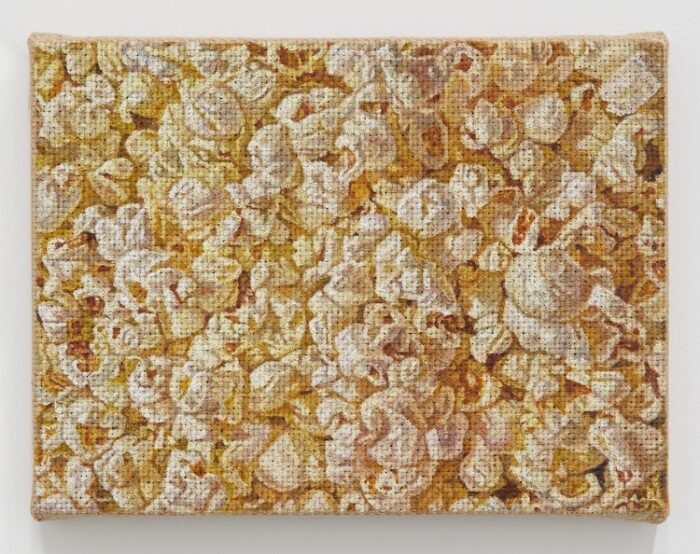
We’ve built a massive appreciation for artists who are using the materiality of paint in their practice, but we rarely see an artist putting emphasis on the qualities of the support on which they’re painting. This is why we are enthralled with the newest body of work by Jennifer J. Lee, that is on view until the end of the weekend at Klaus von Nichtssagend Gallery in New York.
Borrowing the title, as well as the sense of weightlessness, from the song Planet Caravan, by Black Sabbath, the small scale paintings comprising Planet Caravan “explore the emotional range of the past year, shifting between muted terror and a nostalgic longing for simple comforts.” Taking the loose weave of the jute as a set grid for her visuals, Brooklyn-based artist Jennifer J. Lee frequently chooses densely compact images to work with in order to fully utilize its intricate structure. Approaching the coarse surface as a relief of sorts, the multiple layers of thin oils transform the otherwise flat and limited format into a sculpture-like creation.
And while such an approach might feel quite limiting, with emphasis being put on pictures of organic forms, Lee is challenging and reinventing the possibilities of her technique with this presentation. This modus operandi becomes more obvious in the works that are depicting structured, man made settings, contrasting the uneven surface with the straight lines and often artificial light of the image in such examples as Wood Construction, Vending Machine, Bar, or Space Station, all 2021. Ultimately, the irregular surfaces woven with natural fibers seem to be perfect for depictions of the imagery of the same origin, allowing the pieces like Yellow Sweater, Popcorn, Tree Trunk, or Acne Scars, all 2021, to construct the most believable illusion. Accentuating the irregularities and protrusions of seemingly flat surfaces through an acute process, the artist is taking into account both the carefully selected and formatted reference photo and the qualities of her materials. This method results in full utilization of the jute’s wave which in that way gets redefined with an entirely new appearance, pushing Lee’s fundamentally photorealistic paintings towards abstraction.